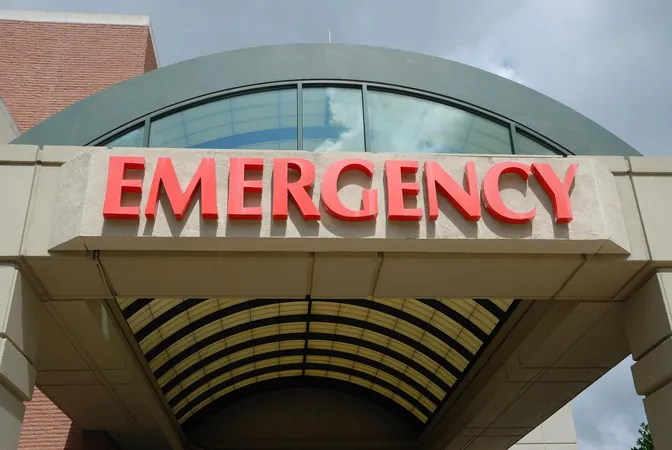
Are Frequent Emergency Room Visits During Pregnancy a Red Flag for Serious Complications? New Study Uncovers Alarming Trends!
2024-11-14
Author: Wei Ling
Introduction
Recent research has unveiled alarming connections between frequent emergency room visits during pregnancy and heightened risks of severe maternal morbidity (SMM). This critical study, conducted by a collaboration between Boston University School of Public Health (BUSPH) and Cityblock Health, analyzed the experiences of nearly 775,000 pregnant individuals in Massachusetts.
Key Findings
According to findings published in *JAMA Network Open*, a staggering 31% of pregnant patients made at least one unscheduled emergency visit to the hospital. More concerning, 3.3% of these individuals had four or more such visits, indicating a nearly 50% increase in the likelihood of facing severe health complications associated with childbirth, including but not limited to life-threatening conditions like eclampsia, sepsis, heart failure, and aneurysms.
Continuity of Care
The study further highlighted a crucial gap in continuity of care, revealing that close to half of the individuals who sought emergency care frequently visited multiple hospitals. This fragmented approach complicates the effective tracking of maternal health challenges, undermining hospital pregnancy programs’ efforts to provide comprehensive care during prenatal and postpartum periods.
Historical Context
This research marks the first major U.S. evaluation connecting frequent emergency care during pregnancy with the risk of severe complications. It builds upon earlier findings where a significant proportion (70%) of individuals who suffered pregnancy-related deaths had also sought emergency care between childbirth and hospitalization.
Importance of Early Identification
In America, where maternal morbidity rates remain distinctively high compared to other wealthy nations, identifying high-risk patients is vital. Dr. Eugene Declercq, the study's lead author and a professor at BUSPH, emphasizes the need for early identification of risks before birth – stressing that preventive support within communities plays a crucial role in safeguarding both mothers and infants.
Demographic Patterns
Utilizing a comprehensive statewide database linking emergency visits – including emergency department admissions and observational stays – to birth outcomes in Massachusetts, the researchers observed patterns across varied demographics. About 18% of patients had one emergency visit, nearly 7% had two, and a concerning 3.3% had four or more visits. Those with multiple emergency visits tended to seek care primarily during the early and late stages of their pregnancies.
Disparities in Emergency Care
Significant disparities emerged concerning race, age, and socioeconomic status among those using emergency services. The study found that younger women (under 25 years), Hispanic and non-Hispanic Black patients, and those with previous health issues or opioid-related hospitalizations were more likely to have multiple emergency visits.
Call for Systemic Change
Dr. Pooja Mehta, the senior author of the study, noted that people of color are disproportionately affected, with this demographic facing increased risks of severe morbidity during childbirth. Highlighting the urgent need for systemic change, Dr. Mehta argues that merely scheduling follow-up prenatal visits is insufficient. Instead, comprehensive actions addressing the root causes, including systemic racism and fragmentation of care, are crucial in reducing maternal morbidity rates.
Conclusion
As the research underscores the vital connection between emergency care during pregnancy and severe health risks, this alarming insight calls for immediate attention and action from healthcare providers and policymakers to enhance maternal health services and support for vulnerable populations.




 Brasil (PT)
Brasil (PT)
 Canada (EN)
Canada (EN)
 Chile (ES)
Chile (ES)
 España (ES)
España (ES)
 France (FR)
France (FR)
 Hong Kong (EN)
Hong Kong (EN)
 Italia (IT)
Italia (IT)
 日本 (JA)
日本 (JA)
 Magyarország (HU)
Magyarország (HU)
 Norge (NO)
Norge (NO)
 Polska (PL)
Polska (PL)
 Schweiz (DE)
Schweiz (DE)
 Singapore (EN)
Singapore (EN)
 Sverige (SV)
Sverige (SV)
 Suomi (FI)
Suomi (FI)
 Türkiye (TR)
Türkiye (TR)